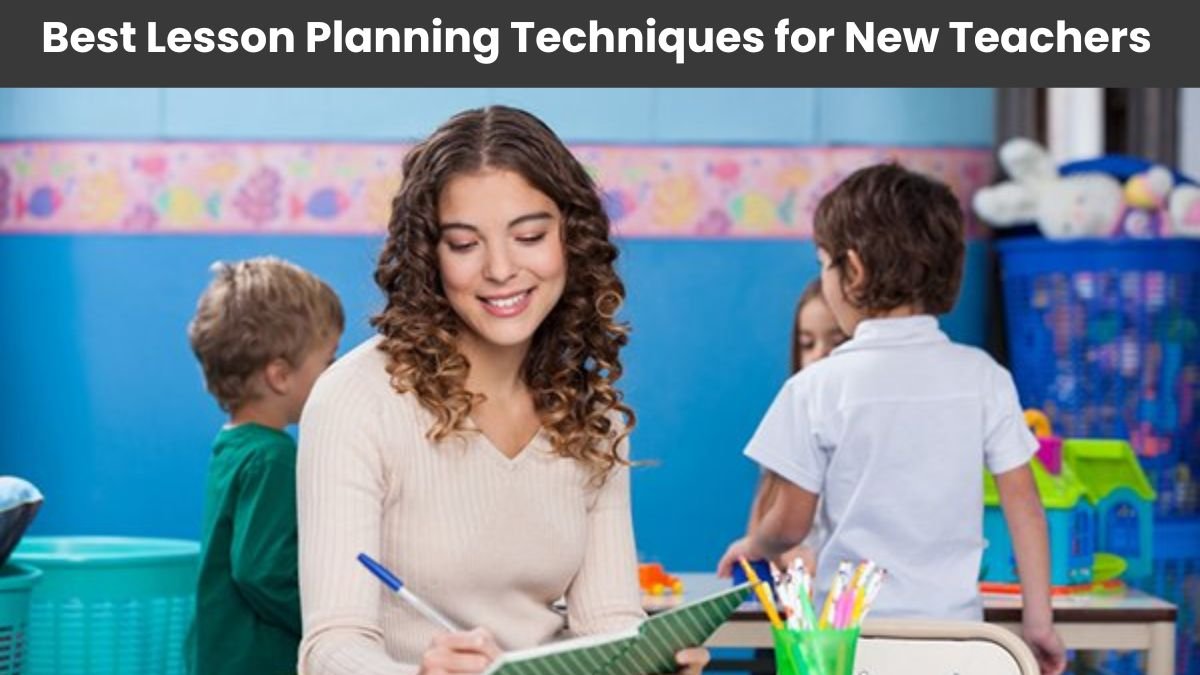Best Lesson Planning Techniques for New Teachers: A Guide
Teaching should not be reduced into an act of coming into the classroom to teach the lesson alone, but it is a process which involves pre-planning, presentation and evaluation. Lesson planning is the most and the initial step in this process.
A good lesson plan does not only provide the teacher with the confidence, but it also makes the process of learning interesting, target, and well-organized to students. This article will tell us in detail how new teachers would be able to prepare a good lesson plan and what are its advantages.
Key Benefits of Lesson Planning
Improves classroom management
When the teacher has a clear plan of what to teach and how to teach, his focus remains more on the students. This maintains discipline, better use of time, and also increases student participation.
Helps in reviewing your teaching
Lesson plan helps the teacher to understand which of his strategies were effective and where improvement is needed. This information is extremely useful while planning the next lesson.
Guide for the substitute teacher
If the teacher is absent, his/her detailed lesson plan becomes a strong support for the substitute teacher so that the classroom teaching continues uninterrupted.
Essential elements of a successful lesson plan
Know the students
Teaching is effective only when it is according to the needs of the students. For this, it is important that the teacher has information about his/her students – such as their background, interests, learning styles (visual, auditory, kinesthetic) and special needs.
Identify the students’ prior knowledge
It is important to know what the students already know about the topic. This has two benefits – first, time is not wasted on things that they already know and second, it becomes clear to you which things need to be repeated or explained in depth.
8 Effective Steps to Prepare a Lesson Plan
Determine Learning Objectives and Standards
Before planning every lesson, it is important to know what are the academic standards and learning objectives related to that subject. This clarity gives direction to your lesson.
Assess the needs and knowledge of the students
While preparing the lesson, know what level the students are at – is this a new topic or an extension of previously taught knowledge? If needed, assess by asking short pre-questions at the beginning of the lesson.
Make a list of the resources required
Making a list of the resources required to teach the lesson – such as books, worksheets, charts, projectors, digital tools, etc. – in advance makes planning easier.
Start with the interest of the students
The beginning of teaching should be interesting. For example – engaging the students in the topic through a fun question, video clip, story or example related to their life is an effective strategy.
Take suitable teaching strategy
All subjects and needs of all students are different. Direct instruction is effective in certain situations whereas in-depth inquiry-based or project-based learning could prove superior in others. Further, the splitting of the student into groups can make the process of learning more engaging and efficient.
Provide enough time for practice
After teaching, it is important to give students time to practice. There are three stages of practice:
- Teacher-guided practice: the teacher solves examples together.
- Collaborative practice: students work in pairs or groups.
- Independent practice: students practice at their own level.
Summarize the lesson
At the end of the class, summarize what was learned today. Also ask students what main points they learned and give a glimpse about the next lesson.
Assessment and feedback
Assess students through quizzes, short assignments, oral questions or activities. This will help you understand what to repeat and what new to teach in the next class.
Tips for new teachers
- Write clearly and concisely: Avoid complex words and heavy language in the lesson plan.
- Incorporate innovation: Do something different in your plan – use new methods that will keep your class interested.
- Write according to the local curriculum: Make the plan in line with the guidelines given by the board or institution.
- Review and improve: After every lesson plan, think about what went well, what did not, and what to change next time.
Conclusion
A strong lesson plan is a proof of a teacher’s preparation. It makes teaching purposeful, systematic and effective. It acts as a guide, especially for new teachers.
Lesson planning is a self-building process not only for students but also for the teacher. If you adopt this practice right from the beginning, in the future you will not only become a better teacher but will also be able to establish your strong identity in the field of education.
